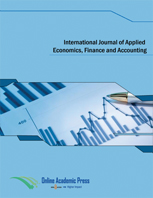Asymmetric effects of exchange rate and oil price on export performance and economic growth in WAMZ
DOI:
https://doi.org/10.33094/ijaefa.v21i1.2033Keywords:
Economic growth, Exchange rate, Export, NARDL, Oil price.Abstract
The purpose of the study is to explore the effects of exchange rate and oil price asymmetries on export performance and economic growth in the West African Monetary Zone (WAMZ). The study uses monthly data from 1970 to 2022. The study makes use of the asymmetric ARDL approach. Our findings show that there exists a long-run relationship between oil price, exchange rate, export performance, and output growth. We find that depreciation of the exchange rate and increases in oil prices generally hinder the economic prospects of these nations. Furthermore, it was found that currency depreciation did not significantly improve the export performance of these nations, primarily due to the largely stagnant manufacturing sectors and other challenges such as infrastructural decadence that these nations face. The findings imply that these countries, as well as the rest of Africa, still need to implement sincere and significant economic changes. We need to make large-scale investments in infrastructure development, revive the dormant manufacturing sector, actively and transparently combat corruption at all levels, and take other actions to stabilize their currencies and boost export performance, all of which will contribute to economic prosperity. We also recommend a strong institutional framework that will strengthen and support the effective policy outcomes.
Downloads
Published
Issue
Section

This work is licensed under a Creative Commons Attribution-NonCommercial 4.0 International License.




